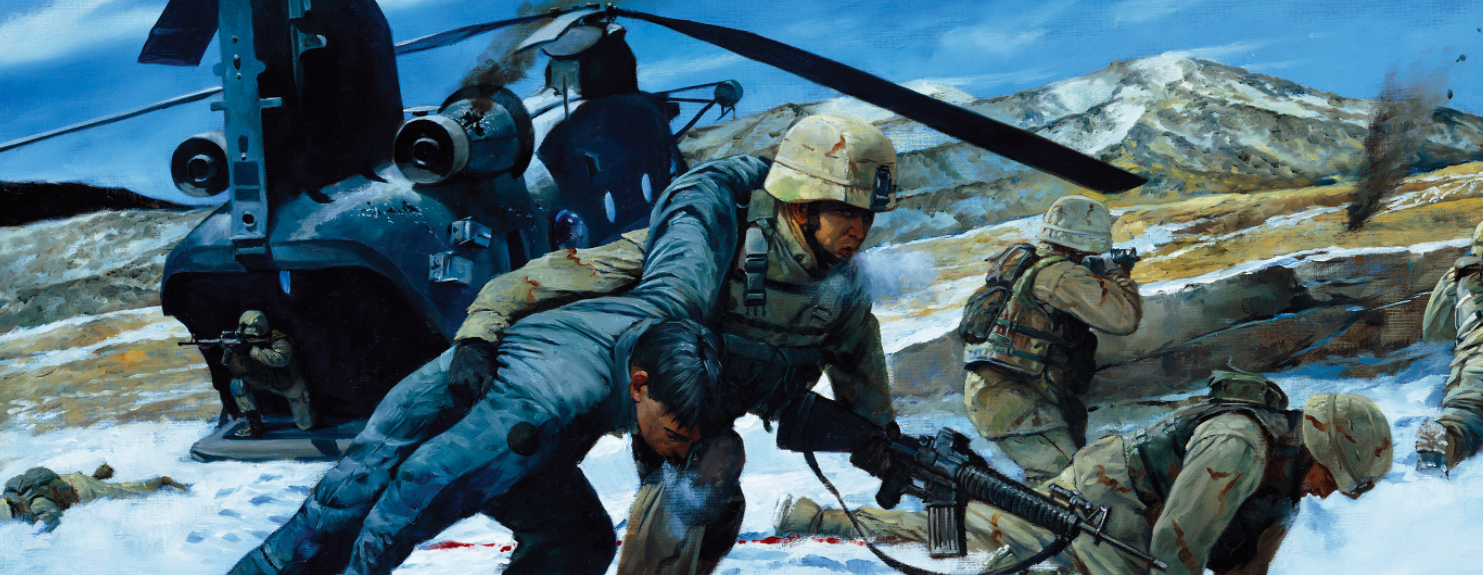On November 1, 2003, then United States Air Force Tech Sergeant Keary Miller, a pararescueman, was awarded the Silver Star after performing extraordinary acts of heroism during a 17-hour battle on the top of a mountain in Afghanistan in 2002. Trudging through deep snow, the fearsome military member went through enemy fire to make sure that his fellow wounded military members were removed from danger, and cared for.
Recently, the valorous distinction was upgraded to an Air Force Cross, the second-highest honor bestowed, after the Medal of Honor.
“We are blessed to have airmen like Keary in the special tactics community. In an extraordinary situation, Keary acted with courage and valor to save the lives of ten special operations teammates. This medal upgrade accentuates his selflessness despite an overwhelming enemy force … although Keary may humbly disagree, he belongs to a legacy of heroes,” said the 24th Special Operations Wing commander, Colonel Michael Martin — who was responsible for Keary’s training right before he and his team deployed nearly 15 years ago.
Back then, the airman was assigned to a U.S. Army Ranger quick reaction force, as a USAF combat search and rescue team leader.
Here’s the full story of the immense danger he faced on that snowy peak in south/central Asia just a year after the World Trade Center fell, via the Air Force:
On March 4, 2002, his team was tasked to support a joint special operations team on a mountaintop called Takur Ghar, occupied by Al Qaeda forces– an engagement commonly known as the Battle of Roberts Ridge after the first casualty of the battle, Petty Officer 1st Class Neil Roberts.
One of the most significant events in recent Special Operations history began when a joint special operations team attempted to infiltrate Takur Ghar, which held a well-fortified and concealed force. The ensuing battle would result in the loss of seven special operations team members.
“We were notified there was a missing aircrew and we were launching a team to go find them,” said Maj. Gabriel Brown, a Special Tactics officer, formerly an enlisted combat controller. “It was unknown who exactly was missing, but we loaded up two helicopters full of Rangers and the (combat search and rescue) package, which included me, Senior Airman Jason Cunningham [pararescueman] and Keary, who was my team leader. I trusted him.”
As the quick reaction force helicopter made its approach over the landing zone, they were struck by rocket propelled grenades at close range –they returned fire with mini guns, but the helicopter impacted the ground hard, lurching into the snow.
“Once we landed, 7.62mm rounds ripped through the fuselage–the daylight popping through, smoke aglow; then the rotors decelerated to a grinding halt,” Brown said. “Immediately, we had several casualties; I remember seeing two Rangers face down. Keary and I were deep in the aircraft—and we made eye contact and shared kind of a ‘here we go’ moment.”
The team disembarked from the aircraft to combat the blistering fire of a waiting enemy. At great risk to his own life, Miller moved through the snowy terrain, crossing into the line of fire on several occasions in order to assess and care for critically wounded servicemen.
“I saw Keary taking action on the wounded, worried about collecting the casualties and triaging them,” Brown said, who was in charge of aircraft communications and precision strike. “He was careful in his thoughts and actions, conducting himself calmly and coolly – relaying the casualty information to me all morning.”
As the battle continued, Miller collected ammunition from the deceased to distribute it to multiple positions in need of ammo, moving through heavy enemy fire each time.
“I was listening to the updates as they were coming in; I was so proud because my friends were on that mountain and their future was so uncertain but they were rocking it – they were doing everything right,” Mclane said, who was listening real-time to satellite communications of the battle. “It’s like, these guys might not make it off this mountain, but by God, they’re going down swinging.”
When Cunningham was killed during another attack, the casualty collection point he was at was compromised. Miller assumed Cunningham’s role — providing medical aid under fire to the wounded – and braved enemy fire to move the wounded to better cover and concealment.
In addition to saving the lives of ten of his teammates, Keary recovered the bodies of seven others.
Upon returning home, he continued to push forward in his role, determined to improve every aspect of a pararescuman’s experience in the face of danger. This included body armor, equipment as well as tactics, techniques and procedures. He relished the position of being a mentor, as well.
“I whole-heartedly believe the Air Force Cross accurately represents Keary’s actions that day. I know those lives were saved that day because of his efforts within that environment … the steps he took to ensure they made it off the battlefield,” concluded Brown.
(Image above is a painting commissioned by the National Guard Bureau commemorating the 2002 Battle of Takur Ghar in Afghanistan — it portrays Miller’s courageous act and rescue)




































